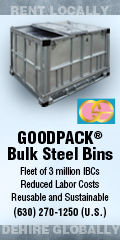
| Archives/Subscribe | www.clfp.com | Contact Us | July 1, 2014 |
Legislature Rejects Budget Request for CPUC Study to Identify CA Companies Eligible for Rate Relief
On June 5, the Legislative Budget Conference Committee rejected the Governor’s proposal to fund a research study requested by the California Public Utilities Commission (CPUC). The amount requested was $1 million.
The proposed study, as part of an ongoing regulatory proceeding, would have aided the CPUC in identifying companies eligible for rate relief due to the threat of leakage. The funding for the study is part of the so-called Climate Dividend. The Climate Dividend is compensation to the ratepayer for the increased cost of electricity and goods and services resulting from Cap-and-Trade program compliance. It is supposed to have no relation to a customer’s billed electricity usage. For large industrial customers, it is to be used to offset increased electricity costs due to indirect emissions. Indirect emissions are emissions of greenhouse gases associated with the purchase of electricity, heating, cooling, or steam. For purposes of the CPUC proceeding, indirect emissions refer strictly to electricity use.
The CPUC requested the funding for two reasons: First, to fund the study to identify vulnerable Energy Intensive and Trade Exposed companies (EITE) in order to determine the level of compensation they will need to protect them from increased electricity rates. For food processors, such companies would be operations with large electricity loads such as freezing or chilling. Second, the funding would be used to engage a firm to disburse appropriate rebates to the identified companies in order to mitigate the higher electric rates.
The CPUC was convinced of the need for the study after CLFP and other industries informed them that the risk of emissions leakage results not only from the direct compliance obligations under the Cap-and-Trade program, but also from indirect costs embedded in the price of electricity to the degree retail rates reflect the price of carbon. For companies operating in trade exposed sectors or markets, indirect GHG cost exposure will almost certainly create the risk of economic and emissions leakage similar to the compliance costs associated with direct emissions.
However, at this time, neither the CPUC nor the Air Resources Board (ARB) possess the data necessary to identify those entities or sectors, not already a part of the Cap-and-Trade, that could pose a leakage risk as a result of their indirect emissions. Without the guidance from the study, neither the CPUC nor the ARB is capable, at this time, of determining any facilities that should be designated as EITE solely due to electricity use.
To date, the legislative staff cited only the "high" cost for the study as the reason for the rejection. However, in real terms, $1 million represents a mere fraction of the billions of dollars that will be raised and distributed in the AB 32 Cap-and-Trade program.
CLFP is continuing to pursue this issue with the Legislature and at the CPUC.
Article written by John Larrea, Government Affairs Director, California League of Food Processors
|
|
| CALIFORNIA LEAGUE OF FOOD PROCESSORS 2485 Natomas Park Dr., Suite 550 Sacramento, CA 95833 Phone: (916) 640-8150 Fax: (916) 640-8156 www.clfp.com |
 |

